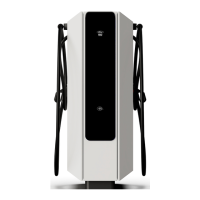Dead revision (status 2)
1. Internal cleaning
Check that the equipment does not show signs of dust, moisture, oxidation or presence of animals.
If dust is found in the control electronics, use a specific vacuum cleaner for electronic boards.
Otherwise, the electronic components may be damaged.
2. Filters
Visual inspection of air filters. Use a set of screwdrivers to access the filters and take them off. Check
that they are clean and unobstructed. Clean them if they are dirty. It is not necessary to replace the
air filters unless they show signs of saturation.
3. Doors condition
Check that each door closes correctly, seals and closures are in good condition. Check hinges,
gaskets, closures and doors.
4. Cables and conductors
Visual inspection of cables and terminals. Check the cables are in good condition and sealed. Check
that the connectors and terminals are correctly inserted and there are no visual signs of overheating.
5. External and internal tightening torques
Check the accessible connections of the Low Voltage circuit and retighten correctively only if
necessary. To do so, check that all tightening marks are in place. In the case of small screws that
do not have marks, good electrical practice will determine if a screw is loose.
Pay special attention to the input connections of the equipment, check the torque and retighten.
6. Control circuit and protections
Check if overvoltage protectors are operational.
Visually check the fuses to guarantee they are not blown.
Check the good condition of the control cards, as well as its connections.

